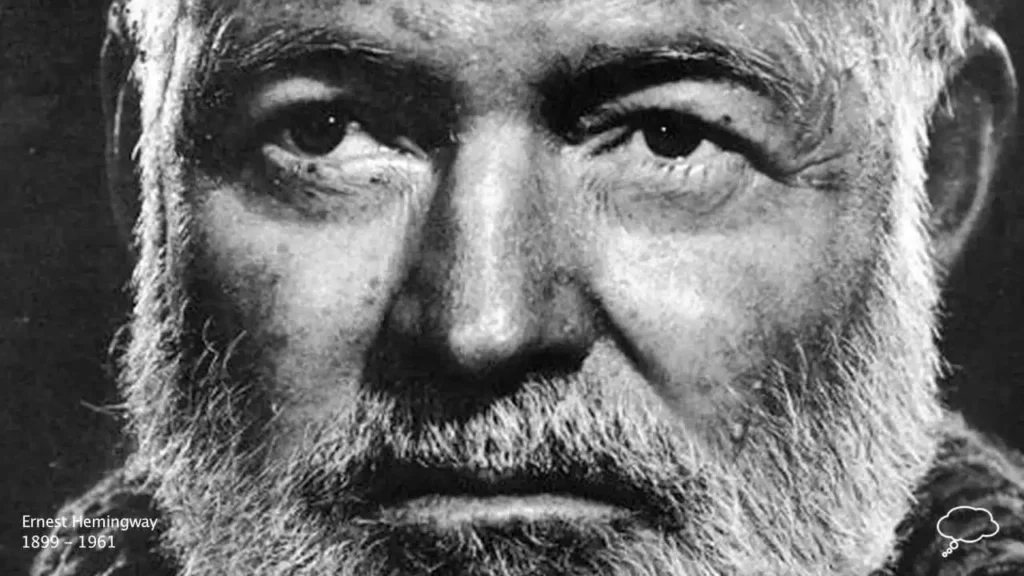The ESTP personality type, often referred to as “The Doer” or “The Dynamo,” is one of the most energetic and adaptable types in the Myers-Briggs® Type Indicator (MBTI).
Known for their bold, hands-on approach to life, ESTPs excel in dynamic environments that require quick thinking, decisiveness, and a practical outlook.
Driven by a desire to experience life fully, ESTPs are naturally drawn to high-energy settings and careers where they can make an immediate impact.
As natural problem-solvers, ESTPs thrive on navigating real-time challenges with efficiency and skill. Whether in fast-paced work situations, social gatherings, or high-stakes scenarios, they bring a unique blend of charisma and pragmatism.
This guide will delve into the essential traits, strengths, and growth areas of the ESTP personality type, shedding light on how they excel across various aspects of life—from relationships and leadership to learning and personal development.
Whether you’re an ESTP aiming to understand yourself better or someone curious about personality types, this exploration of the ESTP’s dynamic traits will reveal what makes them one of the most engaging and action-oriented personalities in the MBTI.
Let’s dive in and discover what makes ESTPs stand out!
Table of Contents
Understanding the ESTP Personality Type
Labeled “The Doer” or “The Dynamo,” the ESTP personality type is among the most action-driven and practical in the MBTI.
They thrive on real-world experiences and prefer a hands-on approach to tackling life. While some types gravitate toward structure or theory, ESTPs seek situations where they can immediately engage and make a difference.
Known for their adaptability and quick decision-making, ESTPs are well-suited to roles requiring spontaneity and resilience.
They are skilled at balancing logical thinking with sensory awareness, making them adept problem-solvers who act swiftly without becoming bogged down in lengthy analysis.
What Does ESTP Stand For?
- Extraverted (E): ESTPs gain energy from social interactions and typically thrive in environments where they can connect with others, exchanging ideas and engaging in collaborative activities.
- Sensing (S): Focusing on the present moment and concrete details, ESTPs prefer dealing with facts and direct observations over abstract ideas or hypothetical situations.
- Thinking (T): ESTPs make decisions based on logic and analysis, often prioritizing practical results over emotional considerations.
- Perceiving (P): Flexibility and spontaneity define their approach, as they adapt to new information and challenges with ease, rarely feeling tied to rigid plans.
Together, these preferences form a personality type that is vibrant, action-oriented, and fearless.
ESTPs are natural explorers, willing to take risks and meet challenges head-on.
Their boldness and spontaneity make them adaptable leaders, often excelling in high-energy roles.
The Doer: A Brief Overview

Dubbed “The Doer” or “The Dynamo,” the ESTP personality type is recognized for their adventurous and pragmatic approach to life.
ESTPs are frequently the center of attention, engaging those around them with their charm, quick wit, and enthusiasm.
They bring energy to social settings, often encouraging others to join in on new experiences, whether it’s a physical activity, social gathering, or spontaneous trip.
Unlike some personality types that may overthink decisions or become anxious about the unknown, ESTPs are bold and decisive.
They believe in tackling issues directly and often excel at solving problems on the spot.
This trait makes them invaluable in high-stakes situations, where quick thinking and adaptability are crucial.
ESTPs’ confidence and charisma help them build connections easily, positioning them as natural leaders in both social and professional circles.
Core Traits of the ESTP Personality Type
1. Energetic and Adventurous

ESTPs are driven by a desire for adventure and enjoy activities that are both thrilling and physically engaging.
They dislike routine and often seek new challenges or experiences that stimulate their senses.
For example, an ESTP might be the first to suggest skydiving or rock climbing, or take on a challenging project at work to break the monotony.
Their energy makes them great motivators, encouraging others to join them in exploring life’s possibilities.
2. Practical and Realistic

ESTPs excel at cutting through complexities to find efficient, realistic solutions.
They prefer dealing with the here and now, focusing on practical approaches that yield immediate results.
If faced with a problem, an ESTP will likely seek the most direct way to resolve it, sidestepping lengthy discussions in favor of actionable steps.
This no-nonsense attitude makes them invaluable in situations that require fast, effective solutions, especially in crisis management or troubleshooting.
3. Spontaneous and Flexible

One of the defining characteristics of ESTPs is their adaptability.
They embrace change and thrive in unpredictable environments.
Instead of relying on rigid plans, ESTPs prefer to go with the flow, adjusting their approach as circumstances shift.
For instance, in a group setting, they might suggest switching plans if they sense that the group would enjoy something different, embodying a “roll with the punches” mentality that keeps them versatile.
4. Observant and Perceptive

With their sharp attention to detail, ESTPs are quick to pick up on changes in their environment or social dynamics.
They have a natural knack for reading people’s expressions and body language, which helps them navigate interactions smoothly.
In a team setting, an ESTP might detect tension between colleagues and work to diffuse it, or notice a minor technical issue that others may have overlooked, showcasing their strong sensory awareness.
5. Bold and Direct

Known for their honesty, ESTPs are often refreshingly straightforward.
They believe in clear communication and are unafraid to voice their opinions, even if they challenge popular views.
In a work environment, this trait allows ESTPs to address issues head-on, preventing misunderstandings and keeping projects on track.
Although their directness may occasionally come across as blunt, it is usually well-intentioned and focused on achieving positive outcomes.
Top 5 Strengths of the ESTP Personality Type
1. Practical Problem-Solving

ESTPs are masters of practical, hands-on problem-solving.
When faced with challenges, they quickly focus on actionable solutions rather than abstract theories or hypothetical possibilities.
This pragmatic approach helps them excel in situations that require immediate action and concrete results.
In high-pressure environments, such as the workplace or social settings, ESTPs often become the go-to people for troubleshooting, whether it’s a technical issue or a group decision that needs prompt resolution.
Their skill for cutting through complexities to find straightforward fixes makes them highly effective, especially in fields like project management, operations, and crisis response.
2. Bold and Decisive

Confidence and decisiveness are hallmarks of the ESTP personality type.
Known for their straightforward nature, ESTPs aren’t afraid to take charge and make firm decisions, often inspiring others to follow their lead.
They prefer tackling issues head-on, viewing obstacles as challenges to be overcome rather than reasons to hesitate.
This boldness makes them highly resilient, able to adapt and push forward despite uncertainty.
For example, in a business setting, an ESTP might seize a new opportunity or suggest a course of action without second-guessing, which often drives results and momentum within their team.
3. Adaptability

One of the defining traits of ESTPs is their ability to adapt to changing circumstances.
They thrive in dynamic environments, quickly shifting their focus or approach as needed to meet new challenges.
This adaptability allows them to handle unpredictable situations with ease, often outperforming others who struggle with change.
Whether it’s a sudden project shift at work or a spontaneous social gathering, ESTPs excel in situations where flexibility is essential.
This trait makes them ideal for roles that require real-time problem-solving, such as emergency services, sales, or event management.
4. Charisma and Social Ease

ESTPs have a natural charm and social ease that draws others to them.
Their lively, engaging energy makes them popular in group settings, and they can effortlessly connect with people from all walks of life.
This charisma not only helps them form strong social networks but also makes them persuasive and effective communicators.
In professional scenarios, they are able to build rapport with clients and colleagues alike, using their social skills to foster collaboration and teamwork.
This trait is particularly advantageous in careers that require negotiation or customer interaction, where their likability and interpersonal skills make a strong impression.
5. Resourcefulness

ESTPs are known for their resourcefulness, quickly finding ways to make the most of any situation.
They are adept at using available tools and information to resolve issues creatively, especially when conventional solutions fall short.
This resourceful mindset allows them to think on their feet and devise unique solutions that others may not immediately consider.
In scenarios where resources are limited or time is of the essence, ESTPs excel at improvising and finding alternatives.
This skill makes them valuable assets in fast-paced industries where adaptability and ingenuity are key, such as logistics, entrepreneurship, and technical trades.
Top 5 Weaknesses of the ESTP Personality Type
1. Impulsiveness

ESTPs’ love for spontaneity and action can sometimes make them impulsive.
They tend to make decisions quickly without always considering the potential long-term consequences.
This impulsiveness can lead to hasty choices in both their personal and professional lives, which may result in overlooked details or unintended repercussions.
For example, an ESTP might rush into a project without fully assessing the resources needed, which can lead to challenges down the line.
Learning to pause and evaluate the bigger picture can help ESTPs make more balanced decisions.
2. Risk-Prone

With their bold and adventurous nature, ESTPs are often drawn to high-risk situations, sometimes seeking out the thrill of taking chances.
While this risk-taking mindset can lead to exciting opportunities, it can also expose ESTPs to unnecessary dangers.
They may underestimate potential pitfalls or fail to consider backup plans, especially in scenarios that call for caution. In financial or professional decisions, this tendency to take risks can lead to instability if not managed carefully.
Finding ways to balance their thrill-seeking with calculated risk assessment can help them avoid unwanted consequences.
3. Difficulty with Routine

ESTPs thrive in dynamic and ever-changing environments, which makes routine tasks and repetitive structures challenging for them.
They quickly lose interest in activities that lack excitement or variation, which can lead to a lack of follow-through on long-term projects.
For example, in a job that requires extensive paperwork or a predictable daily routine, ESTPs may struggle to stay motivated.
To combat this, ESTPs can try breaking tasks into smaller, varied steps or adding challenges to routine activities to maintain engagement.
4. Insensitive or Blunt Communication

ESTPs are known for their direct and honest communication style, but this can sometimes come across as blunt or insensitive.
Their focus on practicality and efficiency may lead them to overlook the emotional impact of their words, especially when dealing with sensitive topics.
For instance, an ESTP may give straightforward feedback without cushioning it, which can unintentionally hurt others’ feelings.
Being more mindful of others’ emotions and learning to temper their honesty with tact can improve their interpersonal relationships.
5. Struggle with Long-Term Planning

ESTPs are present-focused, excelling at dealing with immediate challenges and real-time problem-solving.
However, this focus on the here and now can make it challenging for them to consider long-term goals and commitments.
They may neglect future planning in favor of immediate results, which can impact their long-term success and stability.
For example, an ESTP may be inclined to choose short-term gains over building a foundation for future growth.
Practicing goal-setting and developing a habit of forward-thinking can help ESTPs create a balanced approach to their future.
15 Words that Best Describe the ESTP Personality Type
Adventurous
Bold
Energetic
Charismatic
Direct
Spontaneous
Practical
Observant
Risk-Taking
Confident
Action-Oriented
Independent
Social
Resourceful
Adaptable
Cognitive Functions of the ESTP Personality Type
The following table displays the whole cognitive function stack for the ESTP personality type.
| SL No. | Roles | Cognitive Functions |
| 1. | Dominant/Hero/Heroine/Leading | Extraverted Sensing (Se) |
| 2. | Auxiliary/Good Parent/Supportive | Introverted Thinking (Ti) |
| 3. | Tertiary/ Relief/ Eternal Child | Extraverted Feeling (Fe) |
| 4. | Inferior/Aspirational/Anima or Animus | Introverted Intuition (Ni) |
| 5. | Opposing/Villian/Backup | Introverted Sensing (Si) |
| 6. | Critical Parent/Witch/Senex/Discovery | Extraverted Thinking (Te) |
| 7. | Trickster/Blind/Deceiving/Comedic | Introverted Feeling (Fi) |
| 8. | Demon/Devilish/Angelic/Transformative | Extraverted Intuition (Ne) |
Key Communication Traits of the ESTP Personality Type

Direct and Straightforward
ESTPs communicate clearly and honestly, cutting straight to the point. This directness is efficient in getting messages across but can sometimes be perceived as blunt.
Charismatic and Engaging
With natural charisma, ESTPs draw people in with humor and energy, making them captivating speakers who easily connect with others.
Responsive to Non-Verbal Cues
Highly observant, ESTPs pick up on body language and adjust their tone to suit the situation, which makes them adaptable and socially perceptive.
Solution-Oriented
ESTPs focus on actionable outcomes and prefer discussions that lead to practical solutions, offering advice readily when faced with problems.
Emotionally Reserved
While socially skilled, ESTPs avoid overly emotional topics, keeping conversations light and grounded in the present moment.
Quick and Flexible
They are adept at switching between topics and handling fast-paced conversations, which makes them valuable in dynamic group settings.
Enjoyment of Banter and Debate
ESTPs love playful exchanges and friendly debates, bringing energy and wit to discussions. They enjoy intellectual challenges, often adding a spark to group interactions.
Key Learning Traits of the ESTP Personality Type

Hands-On Learners
ESTPs excel through experiential learning, preferring to dive in and learn by doing rather than through theoretical instruction.
Practical Focus
They are drawn to learning that has immediate, real-world applications and tend to lose interest in subjects without a clear practical outcome.
Adaptable and Quick to Improvise
ESTPs are flexible learners who can adapt quickly to new information, often coming up with solutions on the spot and adjusting their approach as they go.
Goal-Oriented
They stay motivated when learning helps them reach specific goals or overcome challenges, especially in competitive or achievement-driven environments.
Prefers Active Engagement
ESTPs thrive in dynamic learning environments where they can interact, move, and engage directly with the material rather than passively absorb information.
Comfortable with Risk-Taking
They aren’t afraid to experiment or take risks in their learning process, which can lead to innovative problem-solving but sometimes results in trial-and-error.
Dislikes Routine and Repetition
ESTPs quickly lose interest in overly structured or repetitive learning methods, preferring variety and spontaneity to keep them engaged.
Key Leadership Traits of the ESTP Personality Type

Action-Oriented
ESTPs lead by doing. They jump into tasks directly and motivate others to follow their example, keeping the momentum high and projects moving forward.
Decisive and Confident
Known for their quick decision-making, ESTP leaders are confident in their choices, inspiring trust and clarity within their teams.
Adaptable to Change
Flexible and resourceful, ESTP leaders thrive in dynamic environments, adjusting strategies and solving problems as new challenges arise.
Practical and Results-Driven
ESTPs focus on achieving tangible outcomes, setting clear, actionable goals that keep teams aligned and focused on deliverables.
Charismatic and Engaging
With their natural charisma, ESTP leaders connect easily with team members, fostering a positive, engaging, and energetic atmosphere.
Risk-Takers
ESTPs are comfortable taking calculated risks, which can lead to bold, innovative moves that push teams beyond comfort zones.
Direct and Honest
ESTP leaders are straightforward communicators, offering clear feedback and setting realistic expectations, which helps maintain transparency and accountability.
Key Friendship Traits of the ESTP Personality Type

Fun-Loving and Spontaneous
ESTPs bring energy and excitement to friendships, often planning spontaneous adventures that make their relationships lively and memorable.
Loyal and Supportive
When they commit to a friendship, ESTPs are fiercely loyal, showing up for their friends and supporting them in practical, tangible ways.
Direct and Honest
ESTPs value straightforward communication, offering honest feedback and expecting the same in return, which creates an atmosphere of trust.
Hands-On and Present
They’re physically present and engaged, preferring to spend quality time with friends through shared activities rather than just talking.
Encouraging and Motivating
ESTPs push their friends to step out of their comfort zones, often inspiring them to take risks and try new experiences.
Adaptable to Different Social Settings
Socially flexible, ESTPs can easily connect with diverse groups, making them versatile friends who feel comfortable in various social circles.
Enjoys Light-Hearted Banter
Known for their sense of humor, ESTPs love playful teasing and friendly debates, adding a fun and relaxed vibe to their friendships.
Key Love & Intimacy Traits of the ESTP Personality Type

Passionate and Engaging
ESTPs bring energy and passion into relationships, making their partners feel valued and excited with their lively, hands-on approach to love.
Present and Attentive
Known for their attentiveness, ESTPs are fully present with their partners, enjoying shared activities and focusing on the moment together.
Spontaneous and Adventurous
ESTPs enjoy keeping romance exciting, often planning spontaneous dates or adventures to keep the relationship fresh and engaging.
Physical and Affectionate
Physical connection is important to ESTPs, who often show love through touch, affection, and spending quality time in active ways with their partners.
Honest and Direct
They value straightforward communication in love, preferring to be clear about their feelings and encouraging open, honest dialogue with their partner.
Supportive and Encouraging
ESTPs motivate their partners to pursue their goals, offering practical support and encouragement to help them reach their potential.
Loyal When Committed
While they may take time to fully commit, ESTPs are loyal and dedicated once they find a partner who matches their energy and values.
Suitable Careers for the ESTP Personality Type

Sales and Marketing
ESTPs thrive in dynamic environments where they can use their charisma and persuasive skills to close deals and connect with clients.
Entrepreneurship
Independent and resourceful, ESTPs excel as entrepreneurs, taking calculated risks and bringing innovative ideas to life with hands-on leadership.
Emergency Services (Paramedic, Firefighter)
Quick-thinking and adaptable, ESTPs perform well in high-pressure roles like emergency services, where fast decisions and action are essential.
Law Enforcement and Military
ESTPs are drawn to roles that require courage, decisiveness, and physical engagement, making them well-suited for careers in law enforcement and the military.
Project Management
Organized and results-driven, ESTPs are effective project managers, leading teams to success with their practical approach and action-oriented mindset.
Real Estate Agent
Their persuasive nature and people skills make ESTPs excellent real estate agents, helping clients find the perfect property while building strong client relationships.
Sports and Athletics
Competitive and energetic, ESTPs enjoy physical activities and often excel in athletic careers, where they can challenge themselves and stay active.
Construction and Skilled Trades
ESTPs enjoy working with their hands and seeing tangible results, making careers in construction and trades like electrician, mechanic, or carpenter appealing.
Event Planning
ESTPs’ ability to adapt quickly and solve problems on the fly makes them strong event planners, managing logistics and creating memorable experiences.
Detective or Investigator
Analytical and observant, ESTPs excel in roles that require investigation, quick thinking, and following evidence to solve cases.
Famous ESTPs and ESTP Celebrities
Mike Tyson

Known for his powerful and fearless approach in the boxing ring, Mike Tyson embodies the ESTP’s bold, action-oriented nature. His confidence and resilience made him one of the most formidable fighters in history.
Eddie Murphy

A master of quick wit and adaptability, Eddie Murphy showcases the ESTP personality with his energetic comedic style and versatile acting, often captivating audiences with his spontaneous humor.
John Wayne

The iconic “tough guy” of Western films, John Wayne displayed classic ESTP traits with his rugged independence, decisiveness, and strong presence, making him a symbol of action and resilience.
Madonna

Known for her bold reinventions and fearless approach to self-expression, Madonna reflects the ESTP’s adventurous and resilient personality, pushing boundaries in both music and fashion.
Ernest Hemingway

A writer and adventurer, Ernest Hemingway displayed the ESTP’s directness and zest for life, often drawing inspiration from real experiences and leading a life full of bold, hands-on exploration.
Amy Winehouse

With her intense, raw performances and fearless personality, Amy Winehouse embodied the ESTP’s emotional expressiveness and spontaneity, capturing audiences worldwide with her authenticity.
Donald Trump

A bold and assertive leader, Donald Trump exemplifies the ESTP’s decisiveness and confidence, navigating business and politics with a direct, action-oriented approach.
Ben Affleck

Known for his strong, adaptable roles and his forays into directing, Ben Affleck showcases the ESTP’s versatility and charisma both on-screen and behind the camera.
Antonio Banderas

Charismatic and adventurous, Antonio Banderas embodies the ESTP’s charm and physical energy, excelling in action roles that highlight his dynamic personality and hands-on approach.
Glenn Close

With her powerful, intense performances and fearless commitment to complex roles, Glenn Close reflects the ESTP’s energy and boldness, often portraying characters with strength and conviction.
Tips for the ESTP Personality Type for Balance & Personal Growth

Practice Mindfulness
ESTPs live in the moment but can benefit from mindfulness practices to enhance focus, avoid impulsivity, and strengthen self-awareness.
Set Long-Term Goals
While they excel at short-term tasks, ESTPs can improve by setting clear, achievable long-term goals to create purpose beyond immediate action.
Build Emotional Awareness
Developing emotional intelligence can help ESTPs connect on a deeper level with others, making them more effective in both personal and professional relationships.
Learn to Embrace Routine
While routines can feel restrictive, adopting a flexible structure can help ESTPs stay organized and committed to their goals over time.
Prioritize Self-Care
Active and social by nature, ESTPs should schedule time for relaxation and self-care to prevent burnout and maintain overall well-being.
Develop Patience
Working on patience can help ESTPs avoid impulsive decisions, leading to more thoughtful actions and improved outcomes in the long run.
Seek Constructive Feedback
Embracing feedback from others allows ESTPs to understand their strengths and areas for improvement, supporting personal growth and self-improvement.
Balance Risk with Caution
Learning to evaluate potential risks thoughtfully can help ESTPs balance their adventurous side with more calculated, positive outcomes.
Practice Reflective Thinking
Regular reflection on experiences helps ESTPs learn from their actions and grow, making it easier to set meaningful goals for the future.
Cultivate Empathy
ESTPs can improve relationships by practicing empathy, understanding others’ perspectives, and showing sensitivity in interactions.
Research Describing the ESTP Personality Type

The following data is taken from the MBTI® Manual – Third Edition.
Overrepresented in Sports and Physical Activities
In leisure activities, the ESTP personality type is overrepresented in sports, aligning with their preference for physical engagement and hands-on experiences.
Low Use of Spiritual Coping Resources
Research indicates that the ESTP personality type ranks among the lowest in using spiritual or philosophical coping resources, opting for practical, real-world solutions to handle stress and challenges.
High Levels of Assertiveness
Studies show that the ESTP personality type is among the top four for assertiveness in college samples, reflecting their confidence and direct approach in both personal and academic settings.
Satisfaction in Marriage
In national surveys, the ESTP personality type ranks fourth highest in satisfaction with marriage and intimate relationships, showcasing their commitment and engagement when paired with compatible partners.
Preference for Action-Oriented Careers
The ESTP personality type is overrepresented in hands-on fields like marketing, law enforcement, and skilled trades, where adaptability and direct engagement are essential.
Practical and Hands-On Learners
ESTPs excel as practical, collaborative learners, thriving in environments that allow active engagement over theoretical learning, making them well-suited for experiential education.
High Levels of Positive Affectivity
Known for their upbeat, energetic demeanor, the ESTP personality type ranks highest in positive affectivity, often bringing optimism to their social and professional interactions.
Struggles with Routine and Structure
ESTPs frequently express dissatisfaction with overly structured roles, preferring independence, variety, and visible autonomy in the workplace to maintain motivation and engagement.
Strong Deductive Reasoning Skills
Research highlights that ESTPs demonstrate strong deductive reasoning abilities, particularly when compared to Thinking or Feeling-dominant personality types, enhancing their problem-solving skills in real time.
Low Emotional Exhaustion and Burnout
The ESTP personality type ranks low on measures of emotional exhaustion and depersonalization, indicating resilience and a practical approach to managing stress without internalizing negativity.
Conclusion

The ESTP personality type, often known as “The Doer,” is energetic, adaptable, and action-oriented, thriving in dynamic environments that require quick thinking and hands-on problem-solving. ESTPs bring a lively, practical approach to their personal and professional lives, making them natural leaders, engaging friends, and passionate partners. Their boldness and charisma help them navigate challenges with confidence, though they benefit from balancing their spontaneity with patience and long-term planning. By embracing mindfulness, setting purposeful goals, and cultivating empathy, ESTPs can channel their strengths toward meaningful growth and lasting fulfillment. In a world that values adaptability and enthusiasm, ESTPs stand out as resourceful, resilient, and inspiring personalities ready to make an impact wherever they go.
If you enjoyed this post, don’t forget to check these!
ISTP Personality Type: Best Key Traits, 8 Strengths, and Weaknesses
INFJ Personality Type: Best Key Traits,5 Strengths and Weaknesses
ENFP Personality Type: Best Key Traits, 8 Strengths and Weaknesses
If you found this information helpful, share it with someone who needs it. Also, let me know your thoughts below in the comment section.
